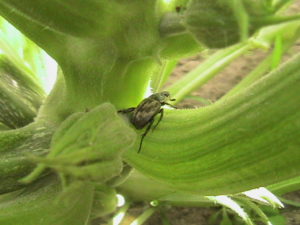 Insects may not cause as much damage as animals do, but they can be more troublesome because you may not see them and they could potentially carry diseases infecting your plants. Since there are many insects that could harm your plants it is important to learn a little bit about them so you know what is eating them and how to prevent the spread of diseases. Knowing the most popular types will help in having a beautiful garden.
Insects may not cause as much damage as animals do, but they can be more troublesome because you may not see them and they could potentially carry diseases infecting your plants. Since there are many insects that could harm your plants it is important to learn a little bit about them so you know what is eating them and how to prevent the spread of diseases. Knowing the most popular types will help in having a beautiful garden.
Contents
Aphids
The most common insect that you will most likely find in your garden are aphids. They are very small that can arrive in very large populations if they are not controlled. They suck the sap from plants and plant stems and is their primary food source. You can find them on almost any plant including trees, herbs, flowers, annuals, perennials, fruits, and vegetables.
Controlling Aphid Populations
If you have a severe problem with these pests the best thing to do is spray your plants with a strong stream of water. You can use a spray bottle or a hose attachment that shoots a stream that will not damage your plants. Sometimes placing a vegetable oil substance on them can prevent them from staying on your plants and might reduce their populations.
Since aphids come in large populations it happens to be one of the insects that many predators are used as a food source. Attracting beneficial predators is a great way to keep aphids away from your garden. Some of these predators include lady beetles, multicolored Asian beetles, aphid midges, hoverflies and their larvae, and lacewings.
Cabbage Maggots
Another important insect that can cause damage to your crops are cabbage maggots. The adults are very small flies that are about ¼ inch in size with a couple of black stripes on their thoraxes. The larvae are small white maggots that cause the majority of the damage. The adults lay the eggs which leads to the larvae tunneling into the roots.
These insects are capable of damaging and even killing many plants that they affect. They also may allow diseases into the roots which will eventually lead to many problems that could affect your whole crop if you are not careful. They can affect plants such as cabbage, broccoli, brussel sprouts, cauliflower, turnips, and radishes.
Preventing Maggot Damage
The best thing to do is to make sure that the flies are not able to lay their eggs. You can accomplish this by using row covers that will cover plants preventing adult flies from laying eggs near the roots. Placing tar paper around young plants can be a great way to prevent flies from reaching roots and laying eggs. These are a couple of things to help keep your plants free from these insects. Ground beetles and rove beetles are predators of these flies.
Caterpillars
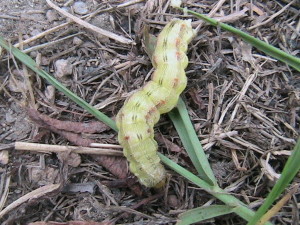 I believe caterpillars are the biggest pests that you will find in any garden. They can be very damaging depending on the type of species that are present. With several species of caterpillars that can harm your plants it may be difficult to control them all. The good news is that there are predators that can help you out in controlling their populations.
I believe caterpillars are the biggest pests that you will find in any garden. They can be very damaging depending on the type of species that are present. With several species of caterpillars that can harm your plants it may be difficult to control them all. The good news is that there are predators that can help you out in controlling their populations.
Moths lay eggs usually on plant leaves or underneath them to protect them from rain or the weather. Row covers and handpicking them is the only way to get rid of them. Parasitic braconid wasps are commercially available and you can release them in your garden if you have a problem with these creatures. Search the specific plants that are affected by caterpillars for more information on how to control them.
Colorado Potato Beetles
Although they are called Colorado potato beetles they are found throughout the United States. They are small orange like beetles that are about the same size as lady beetles. What makes them stick out is there long black stripes on their back which is how you can easily identify them if they are on your plants. Eggs are laid on the underside of leaves and are yellow in colored oval shaped.
You will notice them by either seeing the eggs laid by adults or the larvae eating and chewing through the leaves. You will notice leaves will have small holes through them and if it is early enough you will see the adults walking or flying around host plants. They are obviously found around potato plants as well as tomatoes, eggplants, peppers, and sometimes petunias.
Controlling Potato Beetles
If you see eggs make sure to get rid of them by using your fingers to squash them. Remove any adult beetles that you see and plant resistant cultivars. Some good types of potatoes to grow include Katahdin and Sequoia. Row covers could work as well, but mulching your plants in early spring with a thick layer of straw can suffocate and eliminate many adult beetles.
You can also place dill and coriander between potato plants which may attract predators of these beetles. Some insects that feed on adults, larvae, or eggs include parasitic wasps, lady beetles, and some species of stink bugs.
Cutworms
Adults are small moths about one inch to one and a half inch wingspans that are gray or brownish in color. The larvae that come from these moths are similar in color and some have said that they have a greasy texture to them. They are caterpillars that live in the soil and feed on the roots of many plants.
They actually cut the roots of young plants and kill them instantly. You might find young plants one morning completely dead and it was most likely cutworms that did this. They attack mainly any type of young plants or transplants in your garden.
Preventing Cutworms from Hurting Transplants
The best way to prevent your transplants from getting hurt is to place a collar into the ground a couple of inches and above the soil so that it protects the roots and stems of your new plants. The collar can be made out of a sturdy paper such as cardboard or even using an aluminum can material. Just cut the top and bottom of the can and you have yourself a simple collar to place around the roots.
Cultivating the soil in the spring and fall can expose the larvae and predatory birds can then feast on them for a couple of days. Don’t do anything to the soil for about a week to let the birds eat as many as possible. If you have chickens you can release them into your garden to eat cutworm larvae as well. Braconid wasps and tachinid flies are predators of these parasites as well.
Flea Beetles
Very fast and quickly moving beetles that are annoying pests in any garden is one that you should be able to identify. They are small black beetles that may or may not have a large yellowish stripe on each wing. Larvae are smaller white grubs that have brown heads and are found on most brassica plants such as cabbage, broccoli, kale, and cauliflower. They have been known to eat corn, tomatoes, eggplants, sweet potatoes, and other vegetables.
Tiny holes will appear on your leaves leaving signs of flea beetles being present in your garden. These will be caused by the adult beetles while the larvae will be found on the roots and young plants may show signs of poor growth. More healthy plants that are older will most likely survive in these conditions.
Avoiding Problems with Flea Beetles
If you are going to plants varieties of brassica vegetables then you should consider using plant resistant cultivars. This is where you should begin before growing them in your garden. Metal screens can help in keeping them away from your seedlings as well as floating row covers. Planting late is another way that you can keep from adults attacking your garden. Sometimes spraying kaolin canola oil has been an effective practice in larger infestations.
Japanese Beetle
These beetles are found all over the place in various areas of the United states, southern Canada, and sometimes as far as California. They are very easy to spot because they will have a metallic blue or green shine to them that is very distinguishable. Grayish white grubs found in the soil is what you will find in the soil if these beetles were able to lay eggs.
The larvae cause the most damage because they feed on plant roots when spring arrives. The adults will lay the eggs in late summer and one generation takes about one to two years to appear. They attack mostly fruits, ornamentals, and many vegetables. When the adults feed they will completely devour leaves and flowers. If they are abundant in some seasons they can take over your entire harvest. Larvae chew on the roots of plants and don’t present that much of a problem.
Prevention and Control of Japanese Beetles
Birds can be a great help in keeping down populations of Japanese beetles. When you till the garden you expose the larvae to predators such as birds. Allow them to pick through the loose soil and they will most likely find the larvae.
Row covers can be used again against these beetles. If you find adult beetles you will want to remove them from all your plants if possible. Knocking them onto a sheet of paper, cardboard, or even a bucket of water can be a way to control them. Food grade oils such as kaolin and canola can be sprayed onto crops where large numbers of beetles are present.
Mexican Bean Beetle
These beetles are very common and can be found pretty much anywhere in the United states. Western states especially coastal ones do not have a problem with these beetles. The adults are round brown beetles that have several dots on their back. They are simply lady beetles except brown and will eat your bean leaves. Larvae are tiny caterpillar like creatures that eat leaves of bean plants as well.
Cluster of eggs can be found underneath leaves of plants that they like to feast on. These would include all types of bean plants, alfalfa, cow peas, some grasses and weeds. Both the adult and larvae love eating leaves. If you happen to see holes in your bean leaves make sure to check underneath, because chances are you will discover adult or larvae bean beetles.
Controlling Mexican Bean Beetles
Resistant cultivars can be a big help in keeping these beetles away from your garden. Royalty and Purple pod are both snap beans that are perfect for any small garden. Attracting insects that prey on these beetles is a good practice to start getting into. Grow flowers with lots of nectar because these insects need the nectar to survive.
Composting plant debris is a good idea because this will kill off much of the larvae that may be overwintering in the soil. If you find them on your plants make sure to remove them by handpicking larvae, eggs, and adults. If you happen to have a high population of them you can spray soap making sure to get the undersides and tops of the leaves.
Scales
They are most commonly found in many greenhouses throughout northern United states and in warmer weather in southern United states. They can only survive in the north if they are inside of warm greenhouse or indoors. There are hundreds of species of scales that can be found and look like soft bumps on stems and leaves.
The males you will most likely not find because they are tiny flying insects. The females and larvae will be noticeable on stems, leaves, fruits, and other parts of your plants. Trees especially citrus fruits and indoor plants are susceptible to scales as well.
Getting Rid of Scales
You will want to wash off the scales with water or safe insecticidal soap that will not harm your plants. Most adults will not be affected by this but the larvae can easily be removed when using this method which is a start. The best thing to do is to remove the stems or branches that they have latched onto and discard it. You can use oils to prevent them from coming back. Parasitic wasps and lady beetles are natural predators of these insects.
Tarnished Plant Bug
These bugs are very common and you can find them pretty much anywhere. They can come in various colors of brown, yellow, and green with markings that accompany their wings. They are able to fly using their wings unlike the larvae which are not able to fly and have several black dots on their body. Unlike most other insects that place eggs on leaves or the undersides they actually place them inside the tissue of stems and leaves.
You can find them on most plants and are sometimes found feeding on your lawn and various wild weeds that might be present. The plant sap is what they love to eat and is what they are looking for when you see them in your garden. Since their saliva is toxic to plants it is important that your remove them immediately once you find signs of them.
Keeping Tarnished Plant Bugs Under Control
These insects are found in weeds and garden debris left from previous seasons. Clean up the garden as best you can and remove many weeds that could be home to these bugs. Plant some beneficial flowers in between rows in your garden attracting predators of tarnished plant bugs such as minute pirate bugs and parasitic wasps.


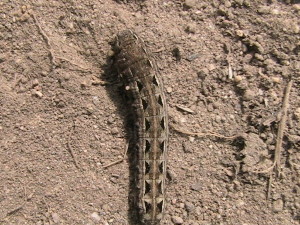
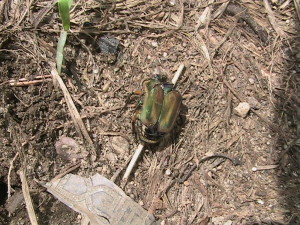
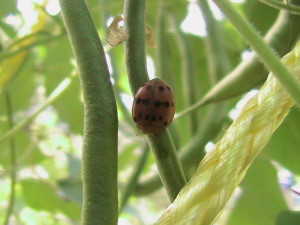
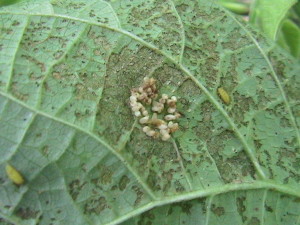
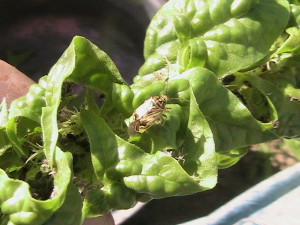
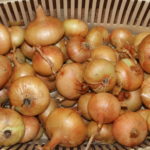



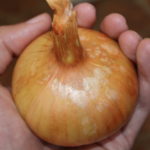
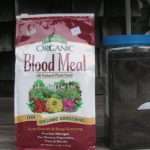
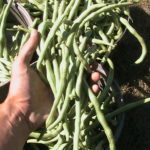
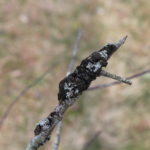
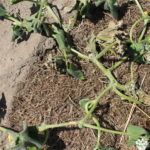
Recent Comments